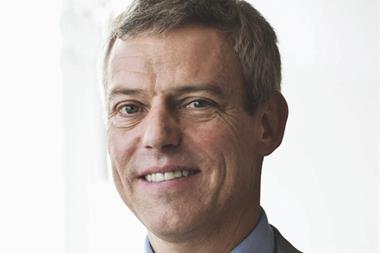Despite increasing pressure from both investors and regulators for more ESG-compliant approaches to portfolio construction, there are still wide differences between asset managers in terms of how they integrate ESG into their investment processes, according to a new study from Scope Fund Analysis.
The study covered 30 large international fund managers from different countries and regions and 12 large German firms, with aggregate assets under management of almost €44trn.
The data analysed was all publicly available, from UN PRI reports and other sources where fund managers have disclosed information about their sustainability efforts.
A total of 58 topic areas were included in the study, covering investment processes and corporate governance, as well as engagement efforts to encourage portfolio companies to act more sustainably. The resulting questions and answers chosen from the UN PRI transparency reports were considered to be indicative of the level of the manager’s integration process.
Of the 42 managers that Scope assessed, some were excluded either because they answered “not applicable” to some questions, or marked others as private.
Depending on the extent of the manager’s ESG efforts, points were awarded based on the number of sustainability aspects asset managers had taken into account.
The results are not intended to be seen as a marketwide ranking, but showed that asset managers have made varying degrees of progress in their efforts to integrate ESG into their businesses.
Federated Hermes achieved the highest score, and was “convincing across most of the 58 topic areas”, according to the study. Candriam and Neuberger Berman were second and third, respectively.
Said Yakhloufi, group managing director for Scope, and the study’s author, said: “None of the providers achieved flawless ESG integration in line with our approach, but many large asset managers are on the right track and are proving that they can keep pace with the growing requirements for sustainable investment and have gone a long way in their ESG integration.”
Yakhloufi told IPE: “ESG should not be a tick-box exercise – the idea is to find out how far a manager’s investment team actually live the idea of ESG.”
And he said the issue had gained in importance because of the increase in accusations of “greenwashing” – that companies are presenting themselves as greener than they are.
Leon Kamhi, head of responsibility at Federated Hermes, said: “We strive to ensure meaningful consideration of material and business-relevant ESG factors, and insights or outcomes from engagement, alongside traditional performance factors. While effective stewardship is common, our integration approach is bespoke to the nature of the individual investment strategies we offer.”
With regard to developing its integration measures, Kamhi said: “We currently have a major focus on more effectively measuring level and change in environmental and social outcomes, and the effect of our engagement to inform our evaluation of an investee’s holistic performance.”
He added that client sensitivity towards ESG integration varies, but said: “Unquestionably, though, client scrutiny has substantively increased on the credibility of a firm’s integration activities, and rightly so.”
Jonathan Bailey, head of ESG investing at Neuberger Berman, said: “We understand that [Scope] were impressed with the way that ESG analysis is integrated into the investment research process of the investment teams rather than being carried out by a separate or central ESG unit.”
He added: “Scope mentioned our use of innovative methodologies including ‘big data’ to complement more traditional quantitative and qualitative ESG analysis. This is an area that our dedicated data science team continues to focus on, as we use new data sets to answer challenging ESG questions.
“Clients are increasingly turning to us to evaluate the credibility of the climate transition goals of companies,” said Bailey. “We track the questions that clients ask during their diligence process, and in recent years a majority of these processes have included questions on ESG integration. Many clients give the quality of ESG integration a formal weight in deciding who to partner with.”
He said the biggest shift Neuberger Berman has seen in the past five years is that more clients are looking to co-create solutions with ESG at their core. Recent examples of co-innovation include net zero multi-sector credit, public equity impact and Asian sustainable credit capabilities.
Meanwhile, Scope has now embarked on a second study, intended to get wider coverage.
“We will be contacting managers systematically,” Said told IPE. “We intend to get answers directly for those questions we have identified as good indicators of ESG integration.”
He expects the study to be published in the final quarter of this year or first quarter of 2023.











No comments yet